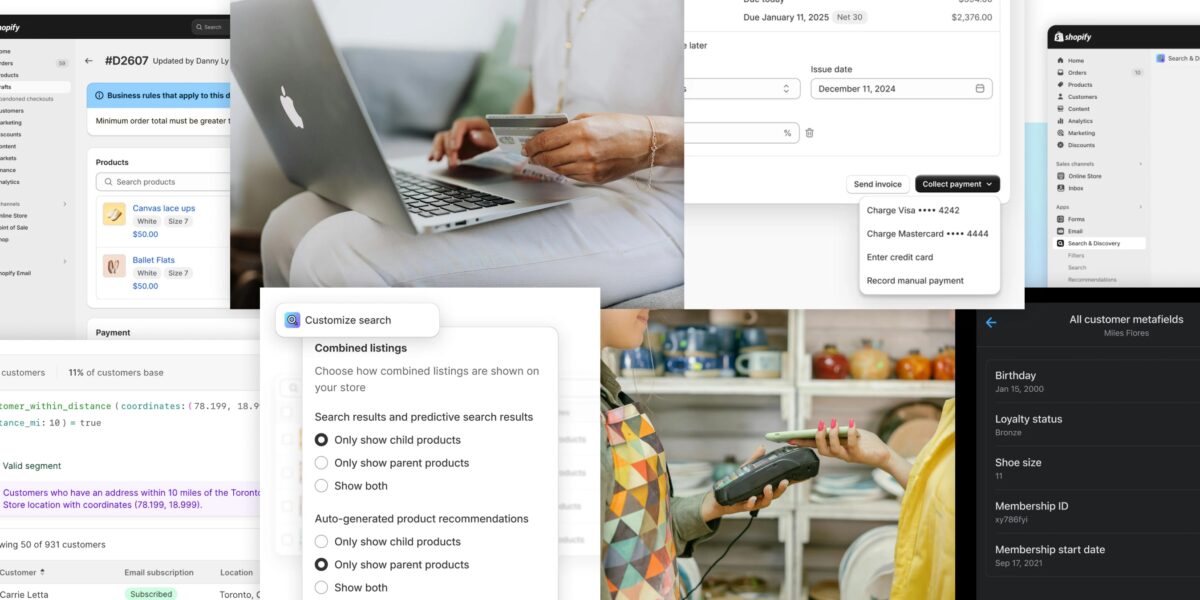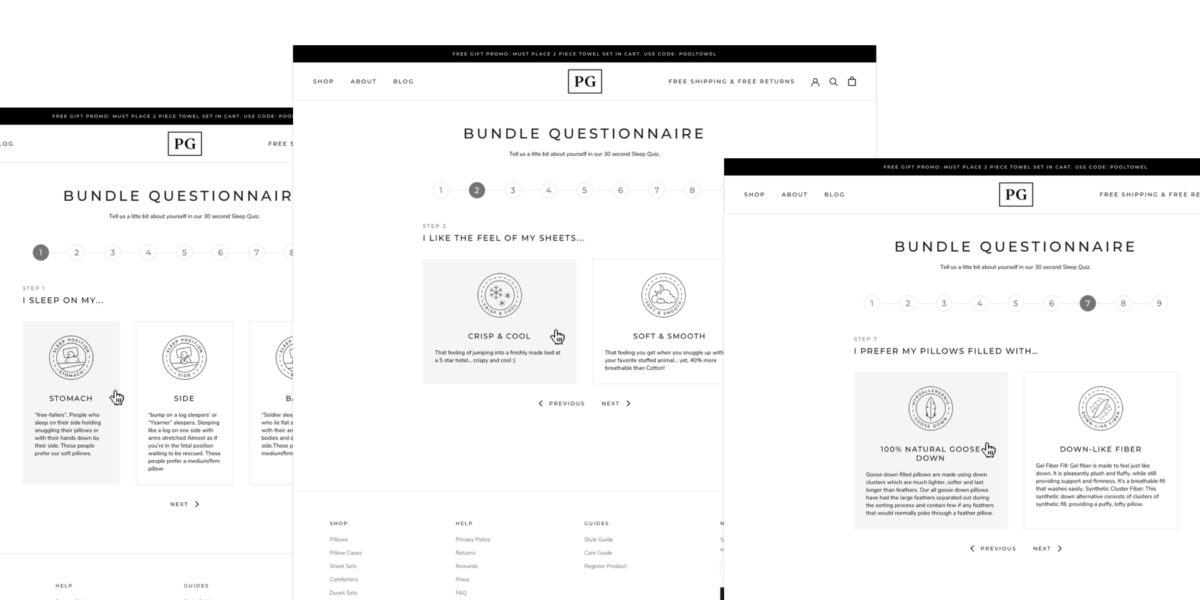The Big Question
Here at Sleepless, we work extensively with both Shopify and WordPress. When we’re helping a client choose the best platform ecommerce, a common question that comes up is whether or not Shopify can meet their blogging needs as well. Let’s explore that.
The Point of Ecommerce Blogging
Shopify is amazing for ecommerce and ideally, you should be blogging to help draw potential customers in. Fresh content, especially evergreen content (material that stays relevant), is a proven component of search engine optimization and directs a steady stream of users to your site. Blogging is often the best source of this kind of content. This is doubly true if you properly employ keywords and internal links. If you run an online store, it’s highly recommended that you have a blog.
Adding a blog to an online store is also nice because of the context it provides. It gives your company a sense of culture and reinforces your brand’s identity. To be clear, “blog” posts can take the form of articles, news, upcoming events, recipes, and pretty much any kind of content that meshes with your brand. Certain posts can also help your visitors to make the purchasing choices that are right for them, with more likelihood that they’ll repeat those purchases in the future. You might get similar results with posts instructing your customers on how best to use their purchases. Put yourself into the minds of your customers. Use your imagination.
Don’t Wag The Blog. er…Dog. Ok, both.
When it comes to choosing between Shopify and WordPress, you really only have three options:
a) Sell and Blog on Shopify
b) Sell on Shopify and Blog on WordPress
c) Blog on WordPress and sell via WooCommerce, which is an ecommerce plugin that integrates with WordPress.
A Word on WordPress
It’s true that WordPress is primarily a blogging platform and there are a plethora of good reasons it powers 26% of the internet. An open-source platform, it offers countless themes and plugins, and WooCommerce (an ecommerce plugin built for WordPress) can be set up on any server you want. While Woo doesn’t charge any extra transaction fees, you pay the same old credit card percentage fees for your merchant account/payment gateway—just like you do on all ecommerce solutions. We find there’s confusion surrounding those terms, especially for those new to the ecommerce space.
It’s no secret that we love working with WordPress for brochure-style, marketing, and heavy, blog-driven content sites, but when it comes to selling online, especially for mature companies, we steer clear and always use the ultra-secure and scalable world of Shopify. We no longer take on any WooCommerce-related work as it just can’t compete with what Shopify offers, into which we’ll take a shallow dive here, though we go into its features and benefits quite a bit on many of our other articles.
The Scoop on Shopify
As a dedicated, hosted ecommerce solution, Shopify is without a doubt an excellent choice for selling online. When a client comes to us and is on the fence on whether to use WordPress or Shopify, we get a lot of questions about blogging limitations, and other agencies only specializing in WordPress sites make a point of fanning those flames. Some of the questions we get are along the lines of the following:
- “We heard WordPress is way better for blogging and that it’s way more flexible.”
- “My uncle’s buddy said the layouts are far more limited than WordPress, is that true?”
- “Isn’t blogging on WordPress way easier to manage?”
- “Our impression is that Shopify’s blogging functionality isn’t as SEO-friendly as that of WordPress.”
For all of these questions, the first thing we ask is: “Well, what kind of special functionality are you looking for on your blog that you are concerned Shopify won’t be able to handle?” The answer is almost always “Well, I’m not sure.” We haven’t encountered one situation thus far where they couldn’t do what they needed to do on Shopify. It’s very rare that they have any super special needs besides writing text content, adding images, publishing, and categorizing.
It’s true that adding functionality to a Shopify blog can be trickier because its blogging engine is pretty stripped down (which we like — ever heard of a Mac?). The good news is if you have a developer worth their salt, they’ll be able to work wonders. You can take a look-see at a few of the very robust and custom Shopify blogs we’ve designed and developed here, here, here, here, and here, to name a few. Even better, there are plenty of supported third-party apps that can take things a step further (check ’em out).
The rub though is that Shopify is better than WooCommerce for an online store based on our many years of experience in the ecommerce space. Most of the time, selling more products and having robust features to do so is going to trump a few minor blogging limitations. Shopify is by no means expensive for what you get but can be more costly than the open source WooCommerce depending on the plan you choose, but Shopify is engineered from the floor up for ecommerce for high conversions and too many built-in sales channels to outline in detail here.
So if you’re blogging primarily for the purpose of drawing more traffic to your ecommerce site, choosing a CMS specializing in blogging (WordPress) instead of one for ecommerce (Shopify) is a textbook case of the tail wagging the dog.
Keep It Streamlined & Seamless
“But” you might ask, “Why not just have a Shopify site with a WordPress install for blogging on a subdomain?” It’s best not to put your blog — or any parts of your site for that matter — on a subdomain if you can avoid it. Google technically looks at each subdomain as a different website, splintering your traffic between those domains. The more traffic on one domain, the better search engine juice you’ll get. Who doesn’t want to make sure their site is as optimized as possible for search engines? In many ways, getting better SEO is the point of blogging to begin with. Furthermore, if you have several different platforms powering your site, that means you’ll have to manage content, security, features, codebases, and maintenance in several different spots. This creates more work on the administration side (who wants that?!?) and will without a doubt be more costly. We call this a Frankensite — a patched-together monstrosity that’ll eventually turn on you. Seamless it is not.
Hopefully, we’ve helped outline why Shopify’s blogging tool is really good in most cases, including features that come with WordPress, like built-in SEO functionality and scheduling posts for the future. Unless you’ve got something really specialized in mind, Shopify should have your back. You can also run multiple blogs on your Shopify site if you feel the need to.
Further Reading
Of course, your case and your needs are just that: yours. You should consider doing your own research and don’t be the least bit shy about reaching out to us if you’re looking for help.
- WooCommerce vs Shopify: Who Comes Out On Top?
- The power of evergreen content for SEO
- Blogs · Shopify Help Center – Speaking of, something else I personally love about Shopify is that they have outstanding, comprehensive online tutorials. Get in there.
















